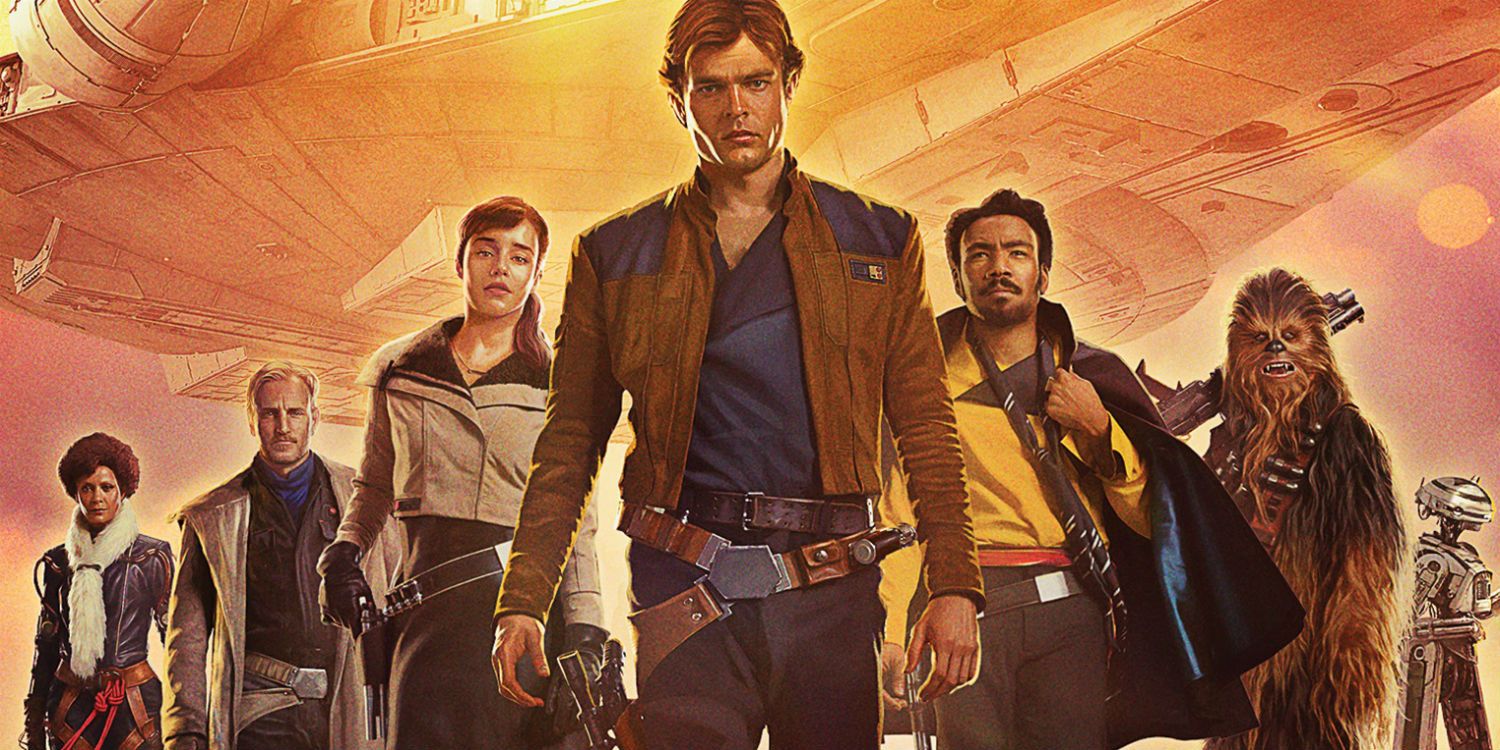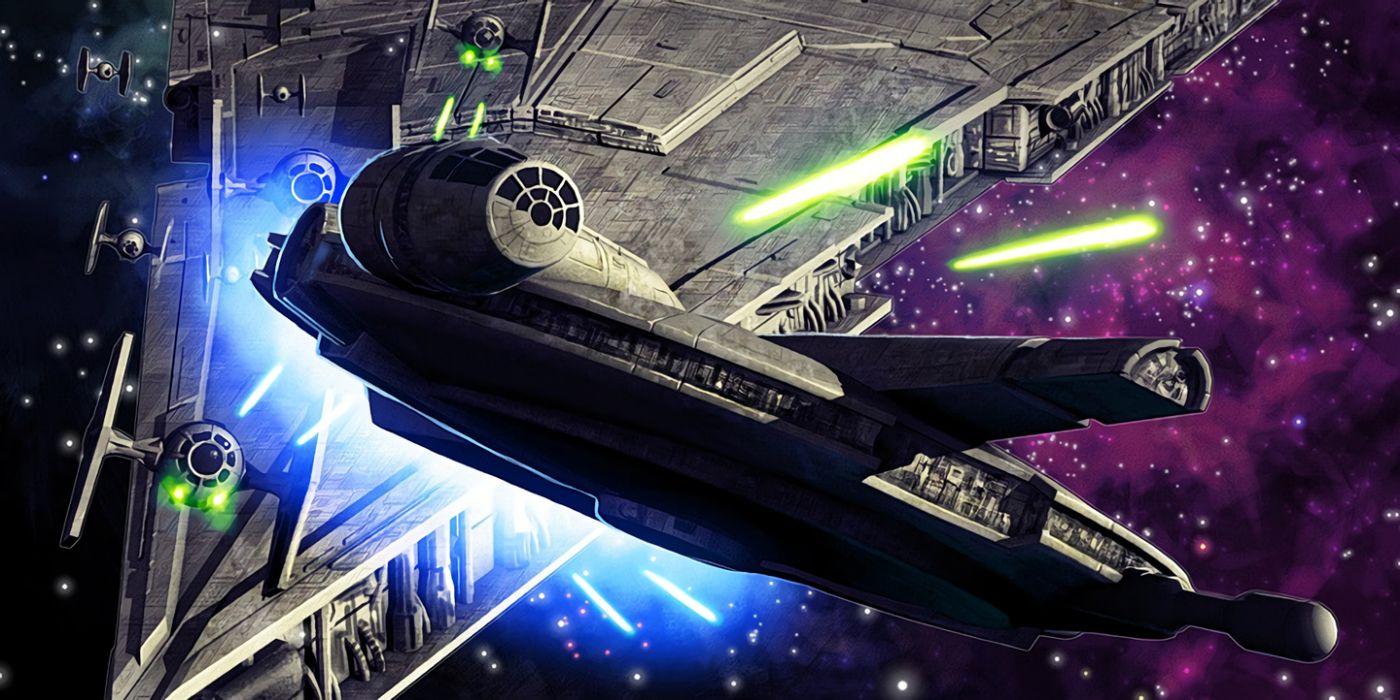
In honor of the digital release of Solo: A Star Wars Story, co-writer Jon Kasdan has taken to social media to present his thoughts on the film. He's revealed that initial directors Phil Lord and Chris Miller had a far greater impact on the final product than anyone had previously thought.
Solo's behind-the-scenes drama has long-fascinated Star Wars fans. Lucasfilm fired Lord and Miller in June 2017, when they were roughly 80 percent of the way finished with production. Reports had previously suggested that the core problem was a "culture clash" between the opinionated directors and Lucasfilm. Their improv style is believed to have been ill-suited to the kind of expensive, canon-focused blockbuster epic the studio typically produces. It ultimately fell to Ron Howard to pick up the pieces, and he's rumored to have reshot nearly all the movie, at double the cost.
Related: Solo: A Star Wars Story Reshoots: What's Lord & Miller And What's Ron Howard?
Solo co-writer Jon Kasdan has taken to Twitter to present his thoughts on the film in honor of its digital release. Kasdan's notes reveal that Lord and Miller were far more influential than anyone had previously believed. Some of their ideas didn't make the final cut, but many became integral to the plot. Take the opening scenes of Solo, which featured a thrilling speeder chase scene. According to Kasdan, Lord and Miller felt that the movie needed to establish Han's driving and piloting skills early on, setting up elements that could play out later on, during the Kessel Run. The hunting lodge at Fort Yoso, a dark wintry location that became an anchor point for the look and feel of the entire movie, originated with Lord and Miller. Even the passionate scene where Qi'ra and Han kiss in the cape closet came from them.

Lord and Miller's influence is best seen in two important elements of Solo. According to Kasdan, the script originally called for the Kessel Run to feature a brief pit stop on an unnamed, "Ridley Scott-type" planet. There, Beckett's crew would encounter Lovecraftian monsters that killed two of their team. When Lord and Miller came onboard, they realized that this would kill the sense of momentum building around the Kessel Run. They kept the Lovecraftian elements, though, creating a vast space-creature that lived within the Maw. It's been called a Summa-Verminoth, in honor of Robert Bloch's Cthulhu mythos. The entire Kessel Run sequence is one of the most popular parts of Solo, and it seems the core ideas were heavily influenced by Lord and Miller.
More controversial, though, is the character of L3. It seems the character was conceived in conversations between the Kasdan brothers and Lord and Miller. Miller made what Kasdan calls "an astute observation" that he was amused by the Mos Eisley bartender's prejudice against droids, given they seem to be the most peaceable beings in the galaxy. The idea of anti-droid prejudice became central to L3's character, and she ultimately evolved into a would-be droid rebel. Finally, Kasdan credits Lord and Miller for casting Erin Kellyman as Enfys Nest, the "marauder" who turned out to be a proto-rebel. Kellyman's portrayal was one of the highlights of Solo, and hopefully she'll return in future Star Wars films.
In addition to acknowledging Lord and Miller's influence on the film, Kasdan hinted at a couple of major plot elements that were dropped. The first was an additional member of Beckett's team, Korso, who was to die on Mimban; the character still appears in the Solo novelization. Another Lord and Miller idea that was dropped was a creature that lived on Kessel, known as a Wapota, which they imagined breaking free during the Kessel uprising. According to Kasdan, the banter was great, but the idea was dropped during pre-production due to costs.
More: How Solo: A Star Wars Story Was Setting Up A Sequel
Source: Twitter
from ScreenRant - Feed https://ift.tt/2OntA0x


0 Comments